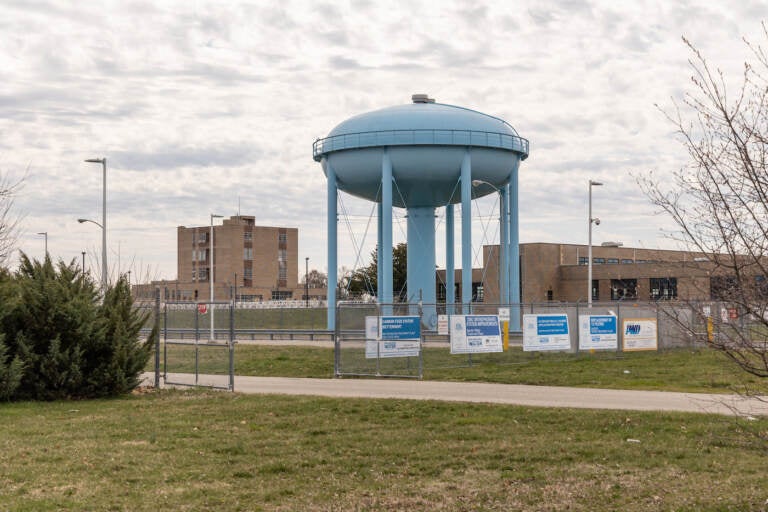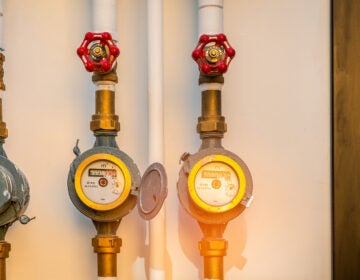Philly Water Department confirms water continues to test clean
Over a week after a chemical spill threatened to pollute Philly’s drinking water, the city confirms the chemicals have not been found in the water.

The Samuel S. Baxter Water Treatment Plant on State Road in Philadelphia, Pa. (Kimberly Paynter/WHYY)
More than a week after Philadelphia Mayor Jim Kenney announced the city’s drinking water would not be impacted by an upstream chemical spill, the Water Department confirmed the water continues to test clean.
From March 25 through April 4, the city tested more than 200 samples collected at its Baxter Water Treatment Plant, from just beyond the intake in the Delaware River to the point where water leaves the treatment plant and enters the pipes that distribute it throughout the city.
None of the “chemicals of concern” were found, officials said in a press release Thursday, “confirming that Philadelphia’s drinking water was not impacted by the chemical spill.”
Late on March 24, at least an estimated 8,000 gallons of a water-based latex finishing solution spilled from the Trinseo Altuglas chemical facility in Bristol, Bucks County into the Delaware River.
Early March 25, the Philadelphia Water Department was alerted about the spill, and began “enhanced monitoring of the river immediately,” said spokesperson Brian Rademaekers.
Philadelphia Water Department officials feared the chemicals — including butyl acrylate, ethyl acrylate, and methyl methacrylate — could enter the Baxter Water Treatment Plant in Torresdale, which draws from the Delaware River to supply more than half of the city’s drinking water.
PWD initially closed the intake at the Baxter facility upon learning of the spill on March 25, officials said. They were forced to open it again early March 26 to maintain minimum water levels for firefighting and to avoid equipment damage.
That day the city recommended residents drink bottled water, spurring a run on bottled water at supermarkets. Then officials reversed this guidance, periodically extending the timeframe in which the tap water was guaranteed to remain clean, based on the results of tests.
Last Tuesday, city officials announced that the city’s water would remain clean. Hydraulic modeling indicated that by the time the city would need to take new river water into the Baxter plant, the contamination would have passed.
During the potential crisis, the Water Department initially received results of tests verbally, from the independent labs that processed the results, Thursday’s release reads, because full analytical results typically take two to three weeks.
The Water Department said it plans to publicly release a summary of the water quality test data in the coming weeks, as it receives these written reports.
PWD also released Thursday the health reference levels — or levels beyond which the chemicals could pose a health risk — for the chemicals in the spill, provided by the EPA and Agency for Toxic Substances and Disease Registry. These are all higher than the thresholds at which the laboratories PWD used to process samples can detect the chemicals, according to the city’s release.
The federal government does not enforce limits on these chemicals in drinking water.
This story was updated to clarify the timeline of PWD’s response.

Subscribe to PlanPhilly
WHYY is your source for fact-based, in-depth journalism and information. As a nonprofit organization, we rely on financial support from readers like you. Please give today.








